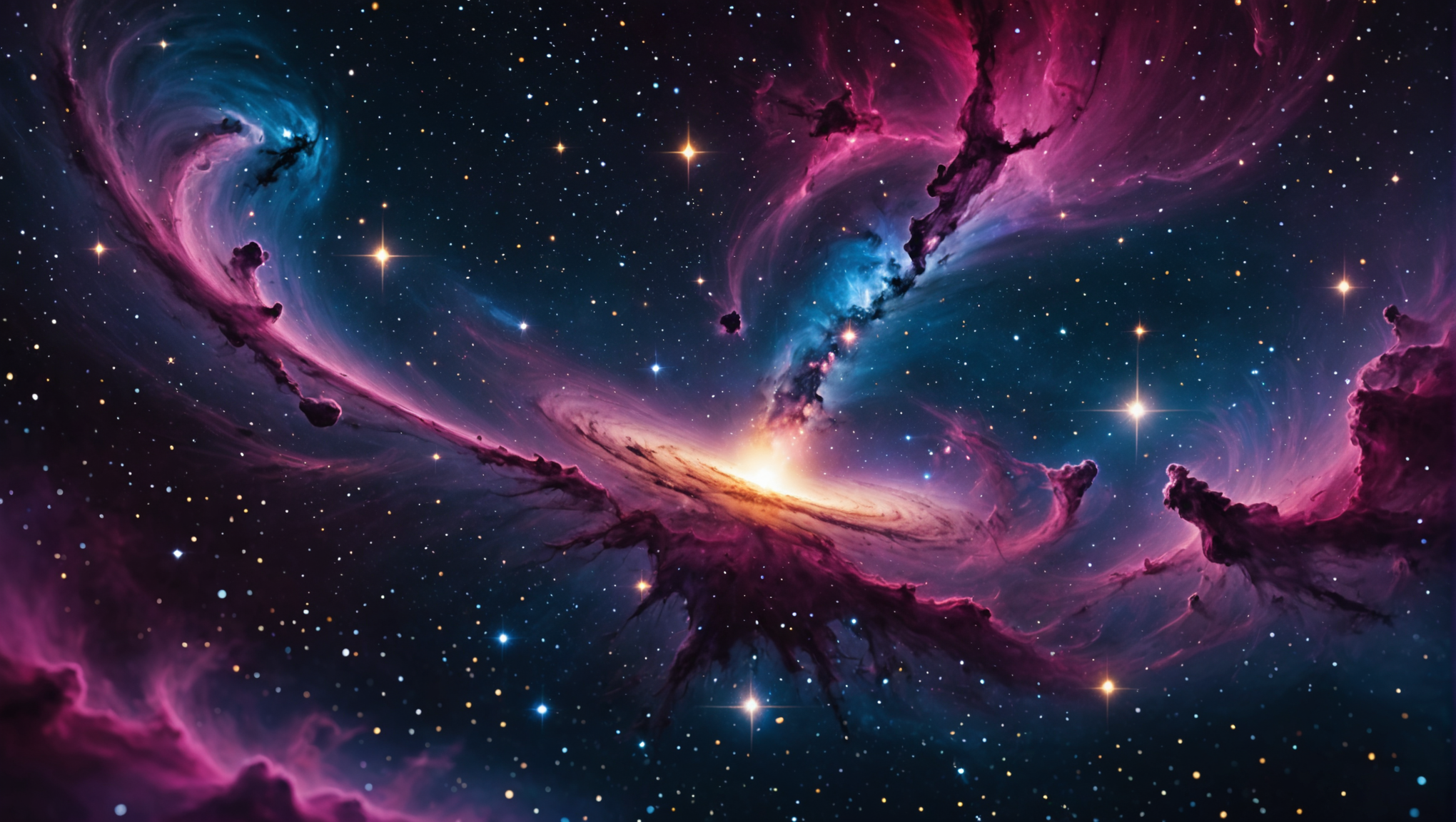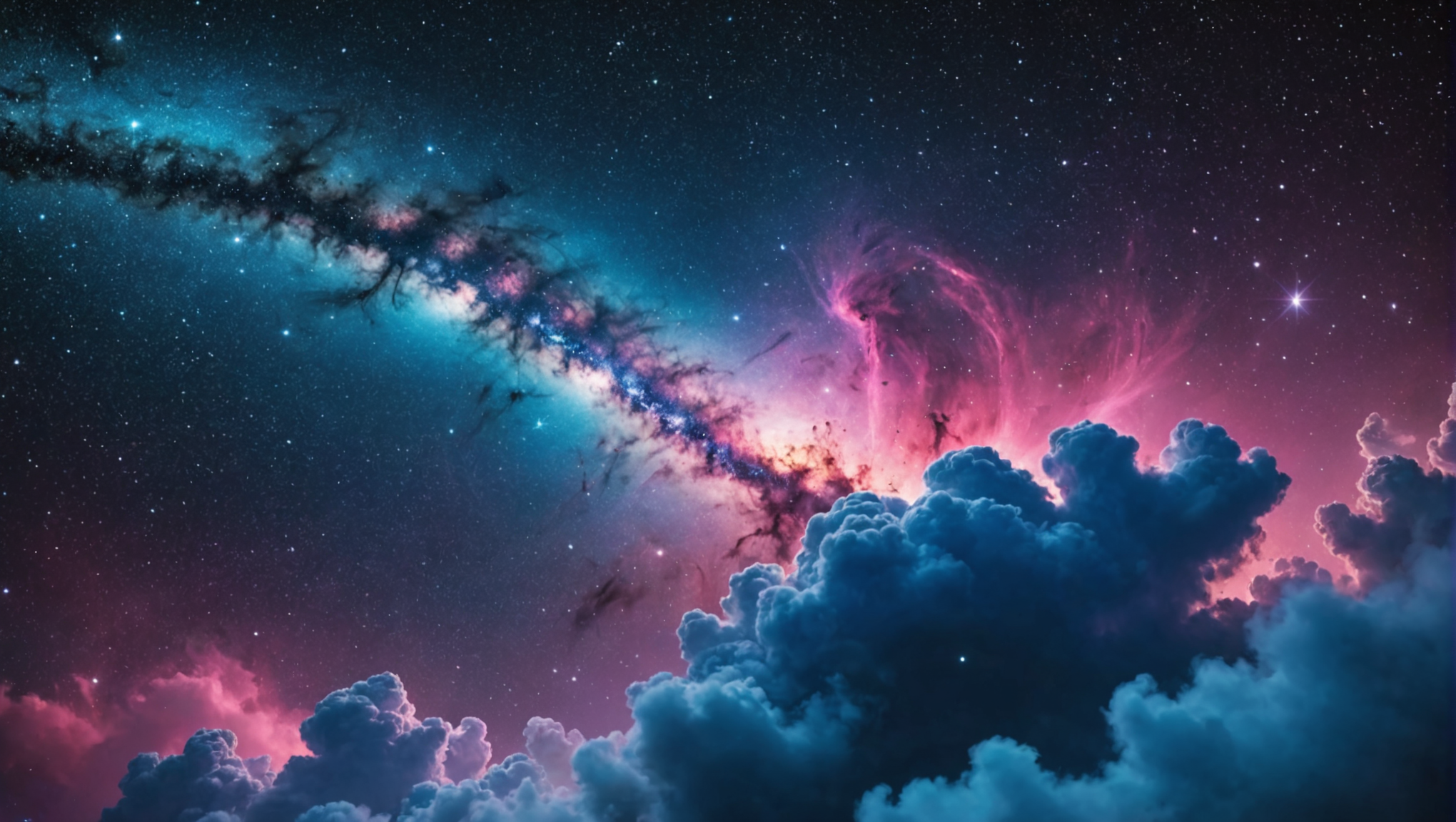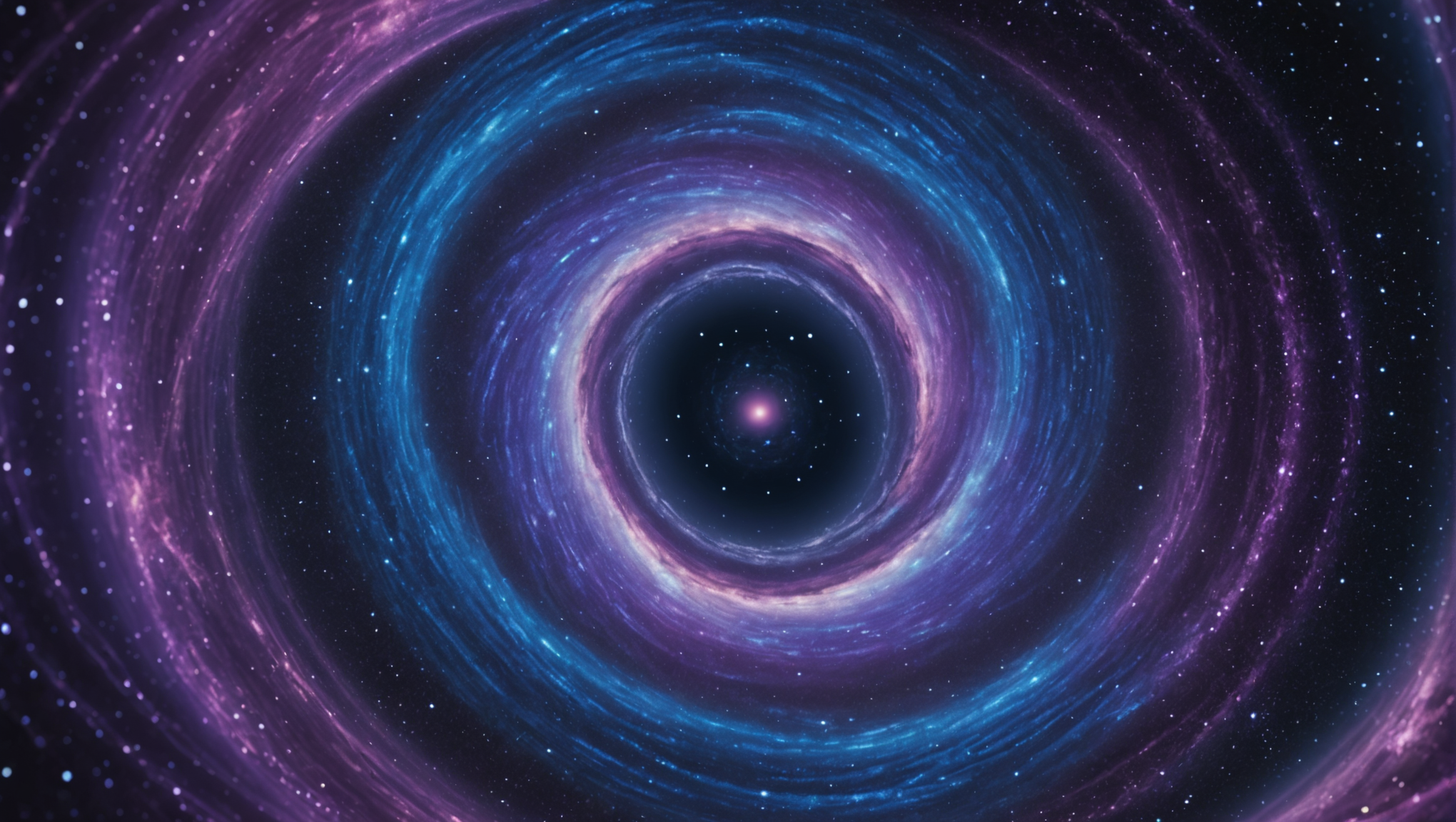Cosmic Discoveries Unlock the Mysteries of the Universe

Mind-Boggling Discoveries in the Cosmos
In the vast expanse of our universe, discoveries continue to astonish and bewilder us, revealing a cosmos brimming with unimaginable phenomena and intricate mechanics. From the birthplaces of stars to the eerie remnants of celestial giants, these mind-boggling revelations shed light on the universe’s complexities, inviting us to question our place within it. One such phenomenon is the interplay of dark matter and dark energy, constituting a significant part of the universe yet remaining largely mysterious. Estimates suggest that about 27% of the universe is dark matter, which does not emit or interact with electromagnetic radiation like light, rendering it invisible. This elusive mass interacts with regular matter through gravity, influencing the formation and behavior of galaxies. Furthermore, about 68% of the universe is composed of dark energy—a mysterious force driving the accelerated expansion of cosmic structures. This duality of dark components challenges our understanding of physics and the universe’s fate, suggesting that we may only know a fraction of the mysteries enveloping us.
Among the remarkable findings are the populations of stellar nurseries, where new stars ignite from the raw materials of cosmic dust and gas. Observing these stellar nurseries allow astronomers to piece together the conditions necessary for star formation. They find that in these regions, gravity reigns supreme, pulling together matter in a beautiful dance that leads to the birth of new stars. The variation in conditions—temperature, density, and chemical composition—further diversifies the types of stars that emerge, from massive stars that burn bright and fast to smaller, longer-lived stars like our Sun. Each stellar nursery encapsulates a moment in the universe’s evolution, a testament to how interconnected and dynamic cosmic structures truly are.
Perhaps one of the most enchanting discoveries involves exoplanets—planets orbiting stars outside our solar system. With thousands of these worlds now cataloged, scientists are beginning to truly understand the diversity that exists beyond our own celestial neighborhood. Programs such as the Kepler Space Telescope have identified potentially habitable zones nestled around distant stars, where conditions may allow for liquid water, a critical ingredient for life. More startling are the discoveries of planetary systems with unique arrangements, challenging existing models of formation and evolution while inspiring questions about the potential for life elsewhere in the universe. With advanced instrumentation like the James Webb Space Telescope, researchers are poised to analyze the atmospheres of these exoplanets for biosignatures—chemical indicators of life.
Moreover, the detection of gravitational waves has opened an extraordinary window into cosmic events. These ripples in spacetime, first observed in 2015, arise from the violent mergers of black holes and neutron stars, allowing astronomers to study celestial phenomena once deemed invisible. Each detection serves as a reminder that our understanding of the cosmos is in constant flux, urging us to expand our knowledge and receptivity to the uncharted territories that await discovery.
As we turn our telescopes skyward, the journey promises remarkable wonders: colliding galaxies whose aftermath shapes the universe; ancient cosmic dust particles illuminating the history of star formation; and even the potential for extraterrestrial life lurking within the icy depths of distant moons. Each of these discoveries invites us to reflect on the grandeur of the cosmos, reminding us that in our pursuit of knowledge, we not only unravel the mysteries of the universe but also deepen our connection to the infinite tapestry of existence.

Mysteries that Challenge Our Understanding
Among the countless stars that blanket our night sky, approximately 90% of the universe lies in mystery. The dark expanse is populated with peculiar celestial bodies and phenomena that not only defy the laws of physics but challenge our understanding of reality itself. Dark matter, for instance, constitutes about 27% of the universe’s total mass, yet its exact nature is a profound enigma. It interacts gravitationally with visible matter, influencing the formation of galaxies, but does not emit light or energy, making it undetectable by conventional means. Many theorized candidates for dark matter particles—such as weakly interacting massive particles (WIMPs) or axions—have yet to be conclusively identified, leaving a tantalizing thread of uncertainty in astrophysics.
The distribution of dark matter appears to form vast halos around galaxies, tightly binding the visible matter we can observe. Yet, discrepancies arise; some galaxies apparently harbor less dark matter than predicted, inciting questions about galaxy formation and evolution. These puzzles compel astronomers to investigate possible interactions between normal and dark matter, particularly in scenarios where simulations designed to replicate cosmic evolution yield results that contradict our observational data. Such anomalies lead us to ponder: could there be undiscovered forces or dimensions at play? This enticing question propels further inquiry into the fabric of the cosmos.
As we probe deeper, we also encounter the notion of wormholes—hypothetical passages through spacetime that could connect distant points in the universe instantaneously. Envisioned through Einstein’s general relativity, these ‘tunnels’ arise from extreme gravitational forces that curve spacetime. If real, they could redefine our understanding of distance, time, and even the nature of travel. However, the scientific community approaches these ideas with caution, iterating that concrete evidence of wormholes must first be established. The prospect raises profound questions about the structure of the universe and hints at the exciting possibility of inter-world connections.
Dark energy, another mysterious facet of our universe, emerged in the late 20th century when observations indicated that the universe’s expansion is not just ongoing but accelerating. If we liken the universe to a balloon expanding, dark energy acts as the hidden force pushing everything away from one another. Despite constituting around 70% of the universe’s total energy density, it evades direct detection, presenting challenges as scientists strive to comprehend its properties. Each revelation sparks further debate about the ultimate fate of the universe: will it continue to expand indefinitely, leading to a cold, dark expanse? Or will our understanding of dark energy evolve to reveal more about the cosmic forces shaping our reality?
Fast Radio Bursts, those brief but intense pulses of radio frequency emissions from distant galaxies, serve as another compelling puzzle. Discovered in 2007, these enigmatic bursts of powerful energy—lasting only milliseconds—are believed to produce as much energy in that brief moment as the sun emits in an entire year. While some of these fast radio bursts display repeating patterns, others remain entirely mysterious, prompting theories that include explanations from magnetar activity to catastrophic cosmic events. To unravel the mystery surrounding these bursts, researchers are all eyes, eagerly awaiting the technological advancements that will allow them to capture these fleeting phenomena more consistently.
Alongside these cosmic anomalies, gravitational waves ripple through the fabric of spacetime, presenting yet another frontier of astrophysical inquiry. The first direct detection of gravitational waves in 2015 marked a historical milestone, confirming a major prediction of Einstein’s theory and illuminating cataclysmic events, like colliding black holes. These waves allow astronomers to observe phenomena previously undetectable, enhancing our comprehension of black hole mechanics and expanding our understanding of the dynamic universe.
The cosmic microwave background radiation, the faint afterglow of the Big Bang, adds another layer to these mysteries. It serves as a snapshot of the universe approximately 380,000 years post-Big Bang, revealing temperature fluctuations known as anisotropies. These variations hold clues about the density and distribution of matter, influencing our theories regarding cosmic inflation and the large-scale structure of the universe. Curiously, anomalies like the cold spot within the cosmic microwave background challenge standard cosmological models, suggesting we may have underestimated the complexity of our universe’s initial conditions.
The realm of astronomy invites us to study these cosmic phenomena, each one rich with implications not just for understanding the universe but for re-evaluating the frameworks through which we view our existence. As every unanswered question leads us down new avenues of inquiry, we find ourselves compelled to explore further, reflecting on our own place in a cosmos filled with wonder and an abundance of tantalizing mysteries. From dark matter to gravitational waves, the universe unfolds like an enigmatic book, waiting for us to decipher its pages and reveal the secrets that lie beyond the stars.

The Soundtrack of Space Exploration
As we venture through the cosmos, melodies intertwine with the dance of celestial bodies, creating a captivating soundtrack of space exploration. The symphony of sounds—from the faint whispers of distant pulsars to the resounding echoes of gravitational waves—captures the essence of our universe and transmits it back to us in ways that ignite our collective imagination. Imagine strapping yourself into a spacecraft where each flicker of light you see is accompanied by a score composed of the very fabric of reality.
Pulsars, magnificent cosmic beacons, have become some of our most reliable clocks. As they spin, they emit beams of electromagnetic radiation, which sweep across the sky like lighthouse beams. When aligned perfectly with Earth, they deliver a rhythmic pulse this is almost music to our ears. These pulsating signals, detectable across vast distances, allow us to calibrate the passage of time in the unyielding expanse of space. Each pulse paints a dynamic picture of the star’s rotation, creating a blueprint for understanding the evolution of the universe.
Meanwhile, the discovery of gravitational waves adds a dramatic crescendo to our cosmic symphony. First detected in 2015, these ripples in spacetime herald from cataclysmic events—merging black holes and neutron stars. Each wave carries within it a story of chaos and connection, expanding our understanding of gravity’s role across large scales. The resonance of these waves opens a completely new realm of astronomical inquiry, allowing us to listen to the universe’s most violent moments. As scientists refine their instruments to capture these faint signals, they also harness the power of these cosmic vibrations, turning them into a melodic tapestry of creation and destruction.
Furthermore, the sounds of our solar system are rich and varied. The electromagnetic waves emitted by planets, asteroids, and comets are translated into auditory experiences through sonic technologies. Inside the great gas giants, Jupiter and Saturn, churning atmospheres generate sonorous frequencies, while the eerie silence of the vast void between stars speaks volumes without uttering a word. These recordings not only immerse us in the environment of these distant worlds, but they reveal the complex dynamics at play, from the swirls of storms on Jupiter to the serene beauty of celestial inertia.
The Cosmic Microwave Background Radiation, often referred to as the remnant echo of the Big Bang, carries its own gentle hum—a subtle reminder of the universe’s infancy. When we analyze this primordial glow, we uncover a mosaic of sound frequencies revealing the temperature fluctuations that occurred within the infant universe. It plays back the universe’s first moments, inviting us into a reflective dialogue with our origins, filled with awe and wonder.
With each new discovery, the soundtrack of space exploration grows richer, capturing not just the sounds of celestial phenomena but also echoing the narratives of our quests for understanding. Every radio wave, gravitational ripple, and frequency emitted from the depths of space resonates with a profound significance, urging us to delve deeper into the mysteries of the universe.
As technology advances, the potential to immerse ourselves fully in the cosmic soundscape becomes ever more attainable. Imagine a future of multi-sensory experiences in which we don’t just observe distant galaxies but “listen” to their evolution—a new form of astronomy that invites the senses into the depths of space. Each star, planet, and cosmic event would have a unique auditory signature, allowing humanity to engage with the universe not simply as observers, but as participants in an ever-expanding cosmic chorus. The adventure of exploration thus becomes as much an auditory journey as it’s a visual one, enriching our connection to the cosmos and inspiring future generations to keep reaching for the stars.